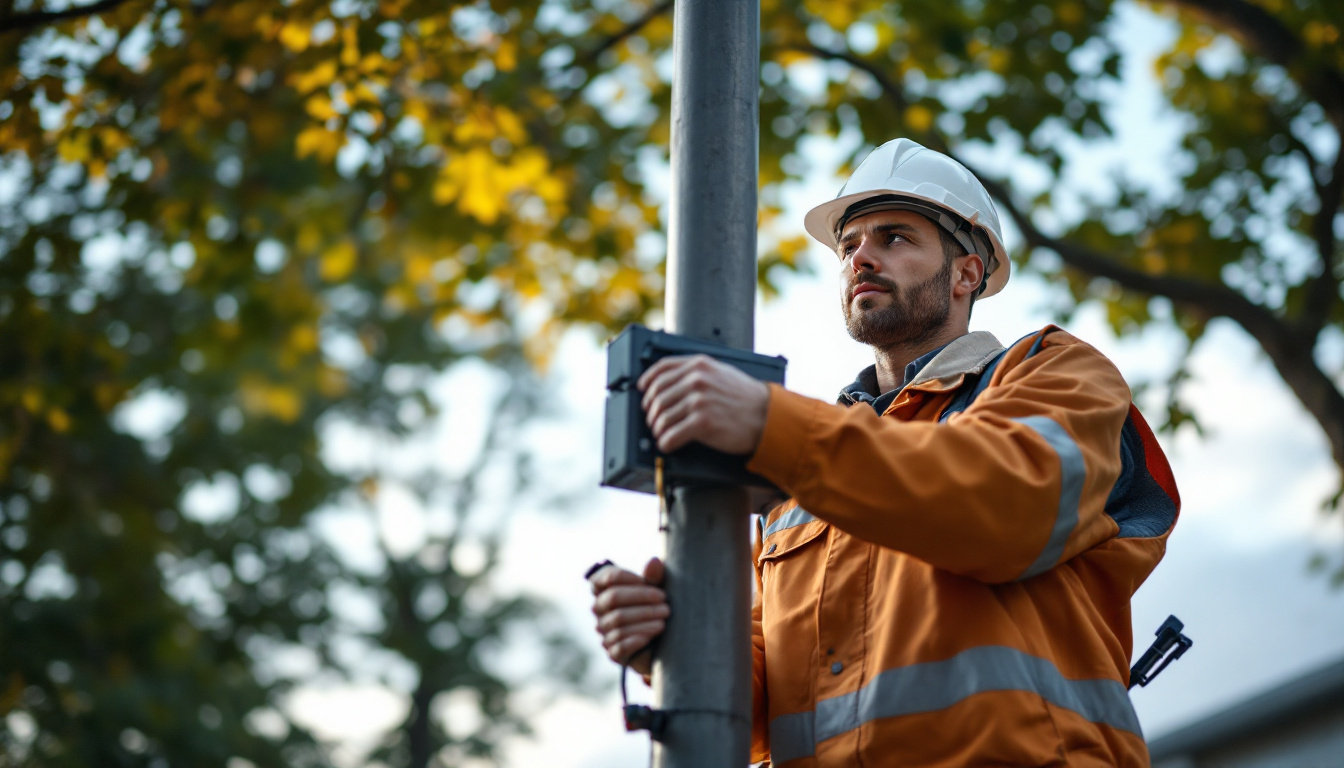
As a lighting contractor, understanding the intricacies of pole switches is essential for ensuring safety, efficiency, and compliance with regulations. This article delves into the do’s and don’ts associated with pole switches, providing valuable insights that can enhance your expertise and improve project outcomes.
Pole switches play a crucial role in the electrical systems used for outdoor lighting. They serve as a means to control the flow of electricity to various lighting fixtures, ensuring that they can be turned on or off as needed. Familiarity with the different types of pole switches and their applications is fundamental for any lighting contractor. The ability to effectively manage outdoor lighting not only enhances the aesthetic appeal of a space but also contributes to safety and security, making the understanding of pole switches even more critical.
There are several types of pole switches commonly used in lighting installations. Each type has its unique features and applications. The most prevalent types include:
Correct installation of pole switches is vital for the safety and functionality of any lighting system. Poorly installed switches can lead to electrical failures, increased maintenance costs, and potential hazards. It is essential to follow manufacturer guidelines and local electrical codes to ensure that installations are both safe and compliant. Additionally, regular maintenance checks are recommended to ensure that switches remain in good working order, which can help prevent unexpected outages and extend the lifespan of the lighting system.
Moreover, the choice of materials and components used in the installation of pole switches can also impact their durability and performance. For example, using weather-resistant materials can protect switches from the elements, reducing the risk of corrosion or damage due to rain, snow, or extreme temperatures. This consideration is especially important in regions with harsh weather conditions, where outdoor lighting systems face significant challenges. By investing in high-quality components and adhering to best practices for installation, contractors can ensure that their lighting systems remain reliable and effective over time.
When it comes to working with pole switches, there are several best practices that lighting contractors should adhere to. These do’s can help ensure successful installations and satisfied clients.
Before beginning any installation, conducting a comprehensive site assessment is crucial. This process involves evaluating the existing electrical infrastructure, understanding the lighting requirements, and identifying any potential challenges. A thorough assessment allows contractors to choose the most suitable type of pole switch and plan the installation effectively. Additionally, it is important to consider the environmental factors that may impact the installation, such as weather conditions and the surrounding landscape. For example, if the installation is taking place in a windy area, selecting pole switches that can withstand strong gusts will be essential for long-term functionality.
Safety should always be a top priority when working with electrical systems. Contractors must adhere to safety protocols, including wearing appropriate personal protective equipment (PPE) and ensuring that the power supply is turned off before beginning any work. Regularly reviewing safety guidelines can help mitigate risks and protect both workers and clients. Furthermore, it is advisable to have a first-aid kit readily available on-site and to ensure that all team members are trained in emergency response procedures. This proactive approach not only fosters a culture of safety but also prepares the team to handle unforeseen incidents effectively.
Testing all equipment before installation is a critical step that should not be overlooked. Ensuring that pole switches and associated components are functioning correctly can prevent issues down the line. Contractors should check for any signs of damage and verify that all connections are secure before proceeding with the installation. In addition to visual inspections, utilizing diagnostic tools to measure voltage and continuity can provide further assurance that the equipment is in optimal condition. This meticulous attention to detail not only enhances the reliability of the installation but also builds trust with clients, who will appreciate the commitment to quality and safety.
While there are many best practices to follow, there are also common pitfalls that lighting contractors should avoid. Understanding these don’ts can save time, money, and potential headaches.
Every region has specific electrical codes and regulations that govern the installation of lighting systems. Ignoring these can lead to legal issues and unsafe conditions. Contractors must stay informed about local codes and ensure that all installations comply with these standards to avoid penalties and ensure safety.
Rushing through installations can lead to mistakes that compromise safety and functionality. Taking the time to carefully plan and execute each step of the installation process is essential. This includes double-checking connections, ensuring proper grounding, and verifying that all components are compatible.
Once pole switches are installed, they require regular maintenance to ensure continued functionality. Contractors should educate clients about the importance of routine checks and provide guidance on how to identify potential issues. Neglecting maintenance can lead to costly repairs and dissatisfied clients.
Proper maintenance is key to extending the lifespan of pole switches and ensuring optimal performance. Lighting contractors should implement best practices to keep these systems running smoothly.
Conducting regular inspections is essential for identifying potential issues before they escalate. Contractors should check for signs of wear, corrosion, or damage to the pole switches and associated wiring. Regular inspections can help catch problems early, reducing the risk of unexpected failures.
Keeping pole switches clean is vital for their performance. Dirt, debris, and moisture can interfere with the functionality of switches, leading to malfunctions. Contractors should recommend periodic cleaning to clients, ensuring that all components are free from obstructions and functioning as intended.
Maintaining a record of all maintenance activities can be beneficial for both contractors and clients. Documentation provides a clear history of inspections, repairs, and any issues encountered. This information can be invaluable for future reference and helps ensure that all parties are aware of the system’s condition.
Even with proper installation and maintenance, pole switches can encounter issues. Being aware of common problems and their solutions can help contractors address these challenges effectively.
Frequent power failures can be frustrating for clients and may indicate underlying issues with the pole switch or the electrical system. Contractors should investigate the cause of these failures, which could range from faulty wiring to inadequate power supply. Identifying and resolving the root cause is essential for restoring reliable operation.
If a pole switch operates inconsistently, it may be due to a variety of factors, including poor connections or internal component failure. Contractors should systematically troubleshoot the issue, checking all connections and testing the switch to determine if replacement is necessary. Ensuring that all components are compatible can also help prevent operational inconsistencies.
Physical damage to pole switches can occur due to environmental factors or accidental impacts. When damage is identified, it is crucial to replace the affected components promptly. Contractors should educate clients on protecting switches from potential hazards, such as falling branches or extreme weather conditions.
As technology advances, so too do the options available for pole switches. Staying informed about innovations can provide contractors with new tools and solutions to enhance their services.
Smart pole switches are becoming increasingly popular due to their ability to integrate with home automation systems. These switches can be controlled remotely through apps, allowing users to manage their lighting from anywhere. Contractors should consider offering smart switch options to clients seeking modern solutions.
Energy efficiency is a growing concern for many clients. Newer pole switch technologies are designed to minimize energy consumption while maximizing performance. Contractors should stay updated on energy-efficient options and educate clients about the benefits of these systems.
Many modern pole switches come equipped with enhanced safety features, such as overload protection and surge protection. These features can prevent damage to both the switch and the connected lighting fixtures. Contractors should highlight these safety benefits when discussing options with clients.
Working with pole switches requires a solid understanding of best practices, common pitfalls, and innovative technologies. By adhering to the do’s and don’ts outlined in this article, lighting contractors can enhance their expertise, improve project outcomes, and ensure client satisfaction. Continuous learning and adaptation to new technologies will further empower contractors to provide exceptional service in an ever-evolving industry.
Ready to take your lighting installations to the next level? At LumenWholesale, we provide lighting contractors like you with the highest quality, spec-grade lighting products at unbeatable wholesale prices. Say goodbye to local distributor markups and hello to superior lighting solutions that meet the strictest industry standards. With our hassle-free bulk buying and free shipping, you can equip your projects with premium lighting while enjoying the best value. Don’t compromise on quality or cost. Visit LumenWholesale now and discover the ideal blend of quality, affordability, and convenience for all your lighting needs.

Explore the top challenges lighting contractors face when installing outdoor solar LED lights.

Discover how lighting contractors can overcome common motion detector switch challenges with expert tips, boosting efficiency and safety—maximize your installations today!.

Discover the essential factors lighting contractors need to consider when selecting 0.120 inch fixtures.

Discover innovative cost-saving strategies for lighting contractors focusing on office ceiling lights.